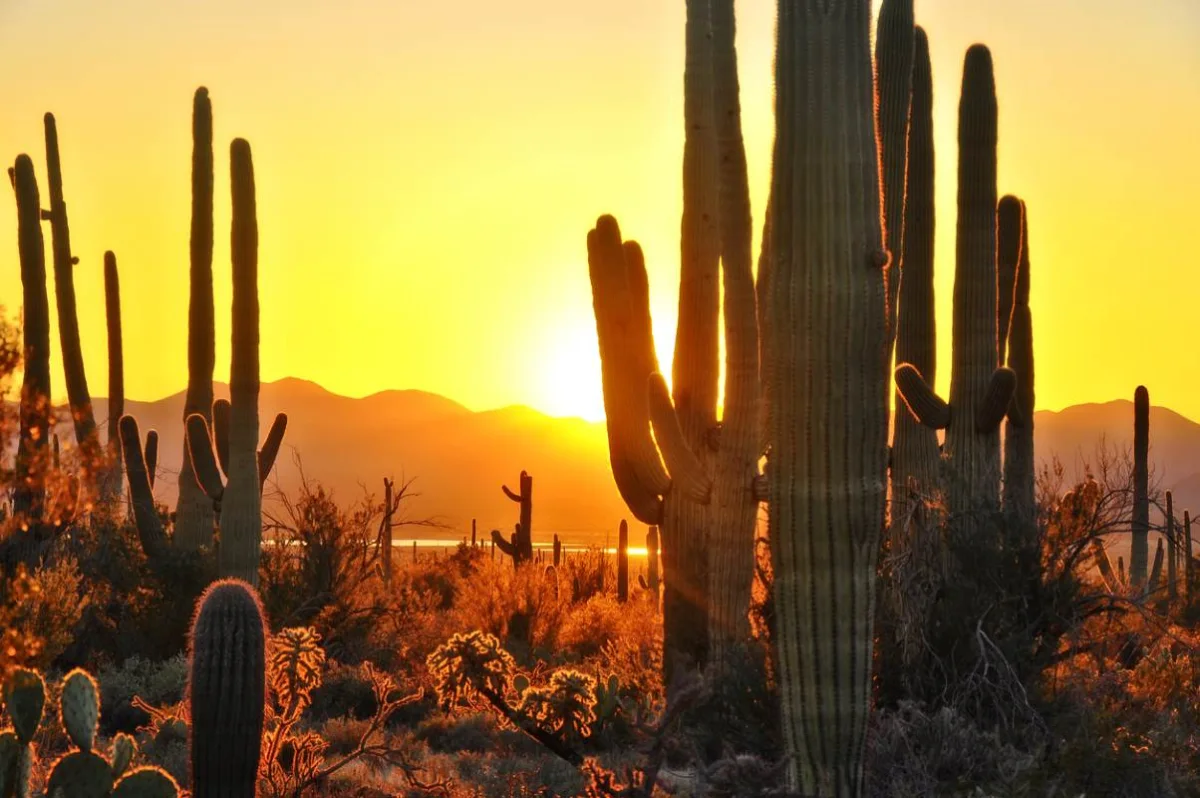
Whether dealing with the common house fly darting around your kitchen or the persistent no-see-ums seemingly appearing out of nowhere, buzzing flies in the house are frustrating. From what attracts flies to how to keep them at bay with fly pest control, learn how to stay one step ahead of these bothersome pests with helpful insights from Burns Pest Elimination.
Why Do I Get Flies in My House?
If you’re wondering how you get flies in your house, several factors must be considered. Flies thrive in warm temperatures, and Arizona’s year-round warmth provides the perfect environment for them to multiply. These pests, just like people, seek the shade and air conditioning of the indoors. Flies are also attracted to your home’s food and water sources, like leaky sinks and uncovered trash cans.
Your home’s shelter, food, and moisture help even the tiniest house fly thrive and quickly reproduce. A female fly that buzzes in through your open door or broken screen can lay up to 500 eggs in three to four days, which reach adulthood in little over a week.
Common Types of Flies in Arizona Homes

House Flies (Musca domestica)
House flies are the most common type of fly found in Arizona homes. These ever-present pests are about 1/4 inch long, with grayish bodies and four dark stripes on their thoraxes. House flies have a short lifespan, typically 15 to 25 days.
Similar in appearance to the green bottle fly (Lucilia sericata) these smaller, darker flies are often found near decaying organic matter, such as garbage, feces, and rotting food, making your kitchen and garbage cans prime targets.
Fruit Flies (Drosophila melanogaster)
Fruit flies are small, about 1/8 inch long, with a tan color for females and brownish one for males, along with distinctive red eyes. These pests are particularly attracted to overripe or decaying fruit.
Fruit flies have a very short lifecycle, often maturing from egg to adult in just over a week. Their rapid reproduction can quickly lead to an infestation, especially in homes where fresh produce is out in the open. While fruit flies are not directly harmful to humans, their presence indicates unsanitary conditions that often attract other pests.
No-See-Ums (Ceratopogonidae)
No-see-ums, also known as biting midges, are tiny mosquitoes that are almost invisible to the naked eye. They are notorious for their painful bites, which can cause itchy welts and allergic reactions in some people. These pests are particularly problematic in areas with standing water, as they breed in moist environments. No-see-ums are especially active in the early morning and late evening, and their bites can lead to discomfort and secondary infections if scratched excessively.
Effective Fly Prevention Strategies for Arizona Homes
To keep flies from becoming a problem in your home, start by eliminating entry points. Flies often enter homes through open doors and windows or may catch a ride inside while you carry in groceries. Reduce the chances of an unwanted invader making its way inside by limiting how often you open your doors—particularly your garage door. If you need to keep doors or windows open for ventilation, we recommend investing in a fly or mosquito net. These nets allow air to flow through while keeping flies out.
Cleanliness is another crucial factor in fly prevention. While dirty dishes and overflowing garbage cans are obvious attractants, even clean homes can be at risk. Regularly inspect and clean moisture-prone areas such as under sinks, around garbage disposals, and in bathrooms. Flies are attracted to standing water and organic matter, so keeping these areas dry and clean can help reduce their opportunities to reproduce.
How To Combat Flies With DIY Fly Control
It’s time to think like a fly. Many flies, particularly fruit flies, are drawn to the smell of fermenting fruit, which releases a distinct aroma. You can replicate this aroma using vinegar, especially apple cider vinegar or distilled white vinegar.
To create a simple fly trap, pour about half an inch of vinegar into a cup and cover it with plastic wrap. Poke a few fly-sized holes in the top so they can enter easily but can’t exit. The plastic wrap is too slick for them to hold onto from the inside, causing them to fall into the cup under their weight.
Flypaper is another popular option. Often available in rolled coils, you can hang this sticky substance above your sink, trash can, or anywhere else where flies are present. To enhance its effectiveness, place a drop of vinegar at the base of the trap. However, be cautious with fly paper. It’s sticky and can be difficult to remove from skin or fur if accidentally touched.
Other good practices to avoid fly infestations include:
- Keeping trash cans sealed tightly to prevent flies from accessing food waste.
- Cleaning up spills and crumbs immediately to eliminate potential food sources.
- Using fans or air conditioning to create a breeze, as flies are weak fliers and tend to avoid moving air.
When To Call in Professional Pest Control
Fly control is a time-sensitive process, and while preventive measures can help, we don’t recommend waiting for results. If you’ve kept your home clean, eliminated entry points, and placed traps but you still find flies buzzing in your house, you may have a serious infestation on your hands.
Don’t wait for the flies to disappear—count on Burns Pest Elimination for fly pest control solutions. We’re proud to provide peace of mind with the best pest control in Arizona. Once you’ve connected with our team, we’ll promptly identify the species in your home, locate potential points of entry, and create a customized plan to address your infestation.
Take the first step toward sending house flies packing and request a free quote from our Arizona pest control professionals today.

